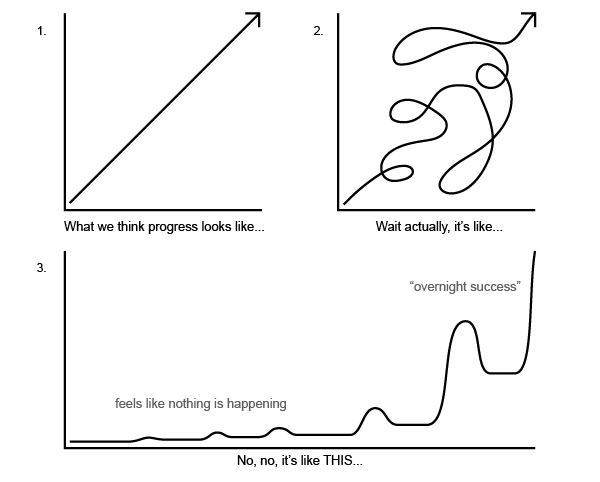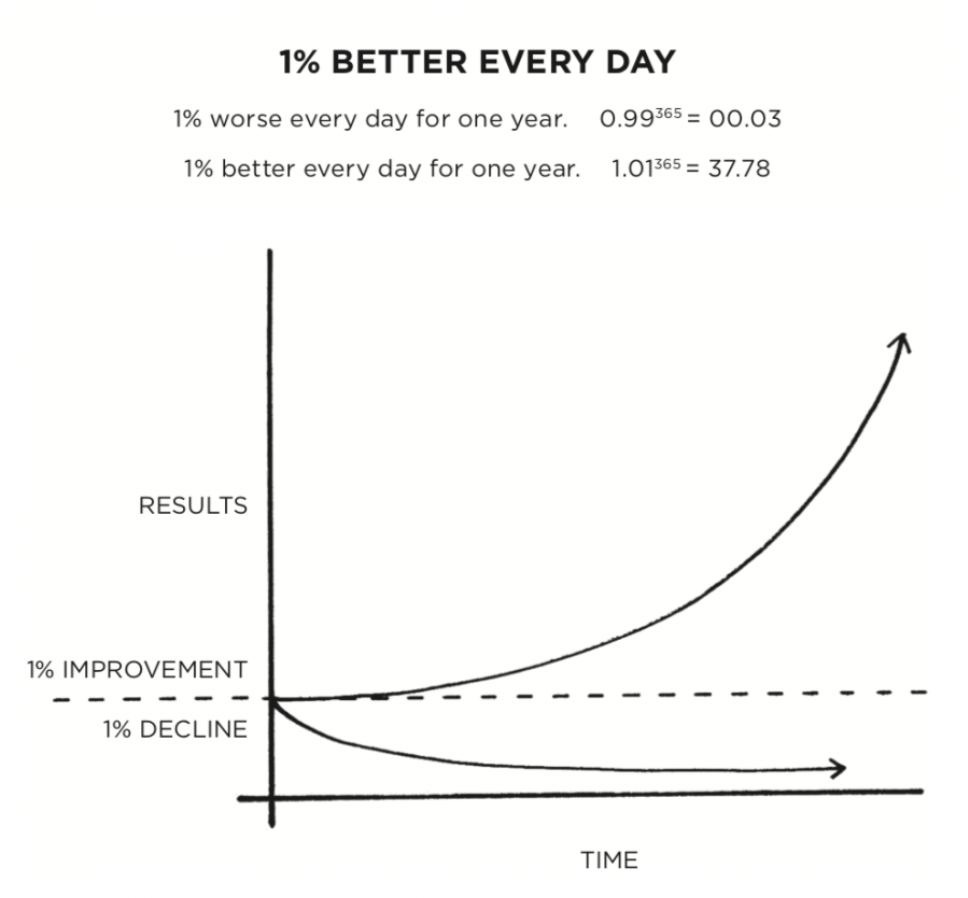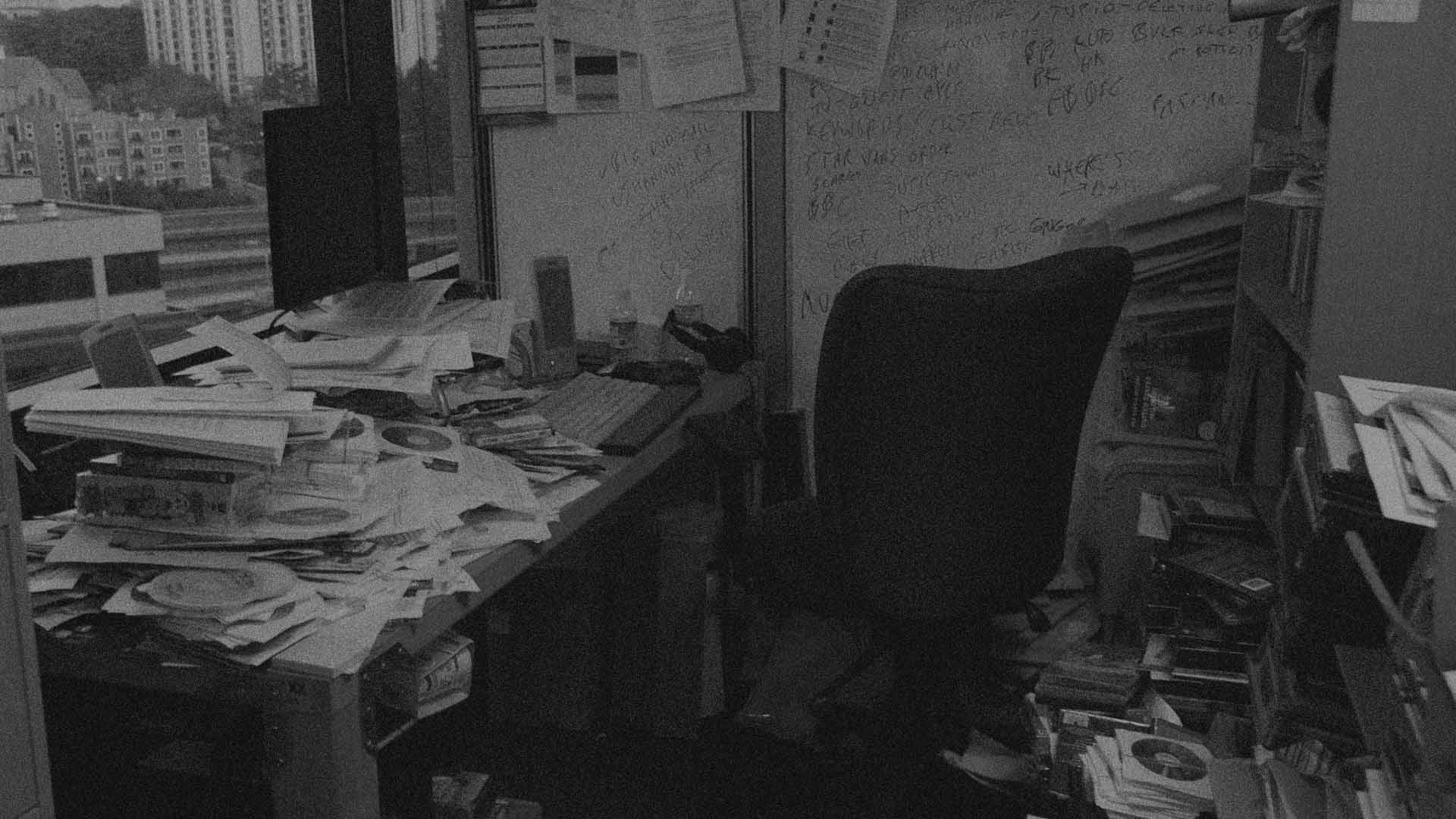Building while busy: how to reframe your work to meet your biggest goals
Hustling doesn't feel heroic in the thick of it
Building while busy: how to reframe your work to meet your biggest goals
Hustling doesn't feel heroic in the thick of it
April 7th, 2023
Read time: 4 minutes
I have endless big ideas, and never enough time. Most creatives I talk to are in the same boat.
But since last year:
- after launching a course
- becoming a regular cOnTeNt cReAtOr
- doubling my freelance business
- and still making time for a daily workout…
I’ve learned a few tricks to making it happen. Whatever it is for you.
Disclaimer: I’m going to use the word “hustle” to describe working on personal and long-term creative projects. If you don’t have a “hustle,” or don’t want to call it that, that’s cool.
1. Avoid the Rocky Fallacy
We expect our breakthroughs to happen in montage. Like the famous training sequences from the ROCKY films. Or, like, any shounen anime.
- Uninterrupted work and flow
- Singular focus on a clear big goal
- Supported by friends and mentors
- Triumphant music coming from…the sky?
It will be hard. Our montage may include blood, sweat, tears, and punching raw meat—but we will embrace pain and persevere!
Except, there is no sky music during the hustle.
You will constantly be interrupted. Your loved ones will become frustrated by your lack of attention. The goal often becomes less clear and feels further away the more you work on it.
This is the Rocky fallacy.
- It’s when you’re waiting for or expending time and energy to manipulate conditions to meet your expectations of what the hustle should look like.
If you prioritize creating the conditions for doing the work over actually doing the work, you’re falling into a trap.
- Clearing your schedule, having a clean and comfortable environment, removing financial anxieties, finding friends and mentors to hold you accountable…
- Better to think of these as luxuries, not necessities.
In reality, working on long-term goals often looks like:
- Sitting at your cluttered, unheroic desk alone
- Only ever having a few minutes to spare
- Making progress so small it feels insignificant
- Feeling guilty for letting down all the people who want your attention
- Vague background music and a candle, if you’re fancy. Café sounds if you’re bougie. 🙋♀️
The key mindset shift for me was to embrace all of this as part of the process—learning to love the unglamorous reality of real progress.
A note on friends and loved ones:
It’s easy to see what Rocky is fighting for. Boxing has a clear opponent and defined rewards.
- So when his friends see him beating himself up with an insane training regimen, they cheer—because it’s clear how the brutal workouts will help.
- They understand why it makes him happy.
But when you spend hours hacking away at something called “motion design” (a term you definitely made up) or “online business” (fool’s gold) your friends and family will grow concerned.
I can’t look into your life and tell you where to draw the line. There is a place to stop and refocus on your health, family, and friends.
- But keep in mind that many people will say you’ve crossed the line long before it’s true because they can’t see the same vision of your future.
- People have different definitions of healthy living, ranging from hedonism to minimalism.
- The accomplishments I’m most proud of (and grateful to myself for) required me to ignore a lot of well-meaning advice to slow down.
2. Reverse engineer the path
You’ve seen this advice before. Start from the end goal. Ask, what kind of person achieves this goal? How do I become that kind of person?
Two points most people fail at when reverse-engineering goals.
1. They don’t get granular enough.
- Break goals into the smallest parts you possibly can.
- If you know exactly what needs to be done each quarter, month, week, and possibly even each day, you are infinitely more likely to stay on track.
- Expect this plan to change and evolve as you go.
Planning without timelines is procrastination. Assigning tasks to days is sharpening your axe.
2. The shape of the path is wrong, which leads to quitting.
All of these paths are accurate, they’re just shown at different scales. Just zoom out.

The long, low path (3) is the part that feels like a slog. There are small moments of progress followed by long plateaus where you can’t see any progress.
If you expect the plateaus, it’s easier to enjoy the process.
3. Sacred spaces don’t help
We expect the hustle to include some discomfort. But then we spend a ton of time and energy trying to get comfortable.
- We turn our studios into temples of the craft, and then long to escape them—to cafés or in coworking spaces.
- Or, we tell ourselves the work is impossible until our space is neat and orderly.
Gordon Ramsey learned how to make risotto on a single-burner hot plate in his New York studio apartment (read: closet featuring a toilet).
If you can run the software, get power, maybe wifi, you can get started.
4. The 1% rule
If your LinkedIn feed isn’t full of quotes from James Clear’s Atomic Habits, you’re not following all the right people. This chart will live rent-free in my brain forever.

Release the dream of your own Rocky montage. Commit to taking baby steps toward your goal.
- Progress happens in fits and starts. But only if you’re consistently showing up for yourself.
- 20 minutes to get some files organized for your new reel, to start writing post ideas, or to draft some cold emails…
- It’s a marathon, not a sprint. Slow and steady, the distance adds up.
5. Hack the game of “luck”
Luck is opportunity + preparation. And opportunity is literally everywhere.
- Instead of chasing your big break, work toward becoming the kind of person that can take advantage of the little opportunities that cross your path every day.
- Little breaks lead to big breaks.
Even if you do get lucky and find some uninterrupted time to work on your masterpiece, it is likely to go to waste unless you’ve been steadily building up momentum and preparing all the minutiae of the task ahead of time.
So take the long view.
Prepare in advance for your lucky break, and maybe you’ll get to have your own Rocky montage.
